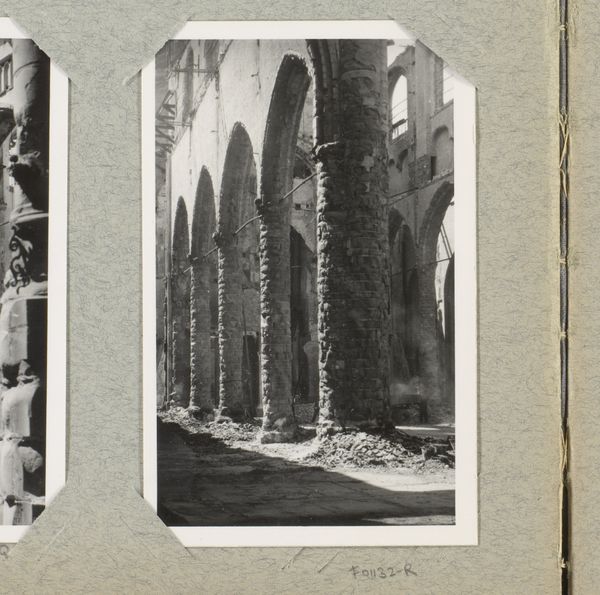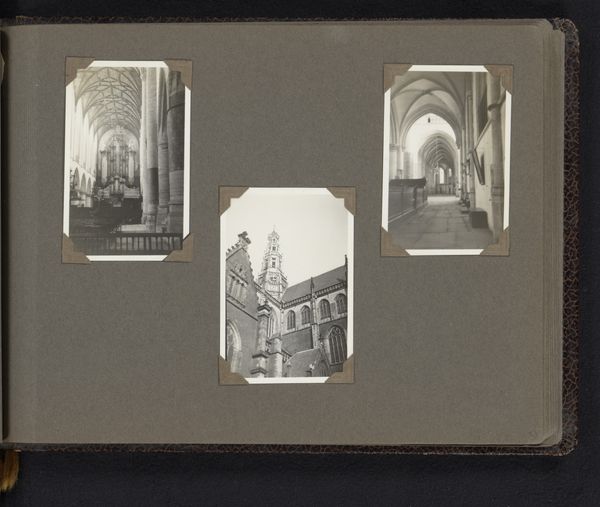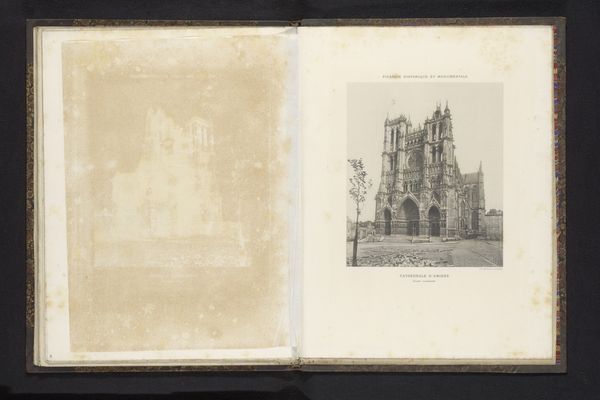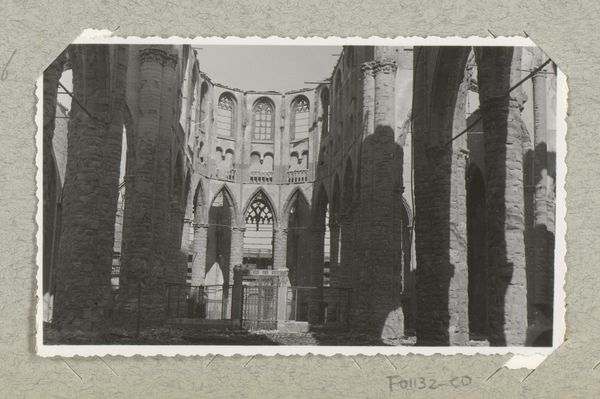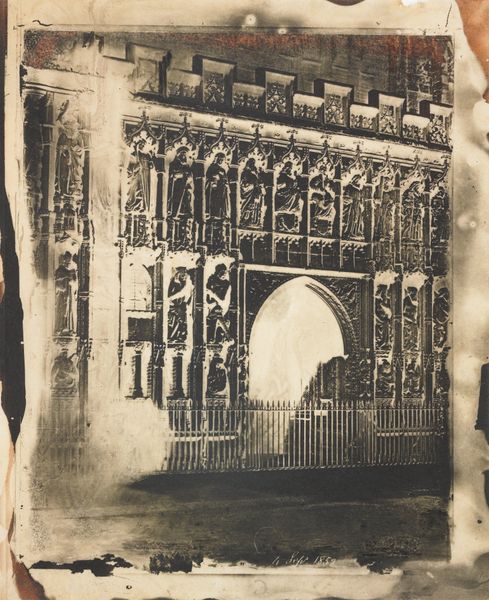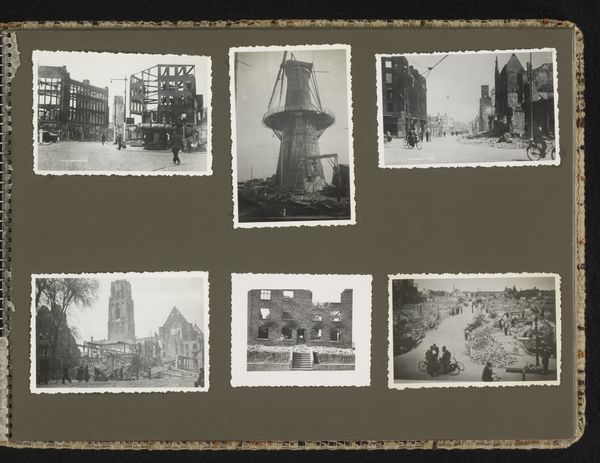
photography, site-specific, gelatin-silver-print
#
aged paper
#
toned paper
#
landscape
#
photography
#
site-specific
#
gelatin-silver-print
#
paper medium
#
modernism
Dimensions: height 136 mm, width 83 mm
Copyright: Rijks Museum: Open Domain
Editor: This gelatin-silver print, "Ruïne van het schip van de Laurenskerk te Rotterdam," by J. Nolte, dating from around 1940 to 1945, is really striking. The ruinous interior and distant figures have an almost ghostly quality. What speaks to you most when you look at this image? Curator: Well, it whispers to me of resilience. It's a photograph, yes, a capture of a specific, terrible moment—but consider what it doesn’t show. This photograph exists on aged paper, that much is true. It invites us to see the endurance and continued life, after something like a catastrophe. What does one *do* with that, after? And these two souls in the nave of the destroyed church are still on their path forward in spite of everything around them. Does it not call for deep introspection? I wonder… What did their future hold, walking into a ruin? What of our own futures? Editor: That's beautifully put! The contrast between the shattered structure and those continuing people becomes really poignant when you frame it like that. Were such architectural photos a common genre during or immediately after the war, maybe as records? Curator: Yes, you are spot on there: photography played a critical role as documentation during that time. These images aren't just neutral records. They remind me of those Vanitas paintings, you know, the still lives that meditate on mortality and time. There's that shared message of…impermanence, perhaps? The acknowledgement of time's passage. Even stone and faith will crumble in time. Yet here the stone, and faith by its being here at all, remains. Fascinating paradox of Nolte’s intention as translated to us so much later, perhaps? Editor: I hadn't considered that connection. Thinking of it that way definitely changes how I perceive the photograph's power and purpose. Curator: Indeed! It's about the dance between destruction and… well, the tenacious pulse of continued living. A conversation between a fragment and what's coming. A stark reminder that beauty—or at least meaning—can be unearthed from the starkest ruins. It can still stand tall, if you keep your eyes to the horizon. Editor: Thanks! That really brings a lot more depth to this piece for me.
Comments
No comments
Be the first to comment and join the conversation on the ultimate creative platform.




